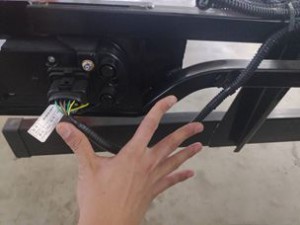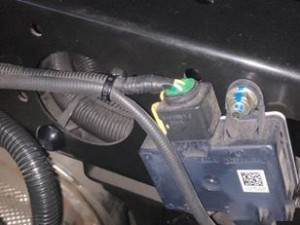T&C general failure and potential cause analysis of wiring harness system series (3)
Today we will talk about a more severe form of connector failure.
Three, ablation
Usually, once it becomes this form, the life of the connector ends. Too, I remind everyone that the failure mode of the connector will be found to change. Depending on the reason, the resistance is large. In the end, it may develop into ablation. Of course, it may also be disconnected without ablation.
Common form:
1. The terminal plating layer melts and falls off
2. The terminal is oxidized and ablated
3. The connector melts and deforms
Potential reasons:
1. Reworked terminals (the excessive gap between female terminals)
We have mentioned this point many times before, so that I won't repeat it here.
2. The connector is subjected to excessive vibration
This point has also been mentioned in "Series Five." If it is a signal terminal, then the signal may be instant forged or completely lost; but if it is a power supply or ground terminal when the vibration exceeds the standard, it will cause damage. The female terminal is separated for a short time; then now, there may be an arc phenomenon, then the next step is a vicious cycle of temperature rise, oxidation intensifies, voltage drop and the temperature continues to rise until the terminal The connector is ablated.
There are two possible reasons for the excessive vibration of the connector:
One is that low-vibration connectors are used in a high-vibration environment, such as V1 connectors are used in a V3 environment.
Second, the actual vibration is higher than the standard.
3. The tape winding distance at the end of the connector is too close
4. Wiring harness design issues
(1) The terminal bears too long wires
This point has been mentioned before, and it will also cause a vicious circle such as the connector withstands excessive vibration. It is best to ablate the terminal connector.
(2) The bending angle of the wire at the end of the connector is too large
The reason for this is actually like reason 3. The essence is that the wire gives the terminal stress, especially the multi-hole connector. This stress is likely to be very large. The difference from reason 3 is that the tape winding affects only the terminals on both sides of the connector, and the wire at the connector tail is bent. If the folding angle is too large, all the airports are affected, and the influence is even more significant.
But, this point is more challenging to solve. Thus, at the beginning of the design, it must be considered during the 3D wiring design. Often, once the prototype car is out, it is difficult to change it. Big.
5. Incorrect connector selection
(1) Overcurrent in case of loop failure is not considered
This topic is estimated to be very strange to many people.
We have mentioned the test of the system principle (loop protection test) before. If you know how the "overload test/endurance test" is done, you can easily say what I am talking about. Besides, we can accept the loss of function when a failure occurs. Still, we cannot get burning wires and connectors because burning these things is equal to burning a car in our concept--continuous existence at the point of failure. Smoke, open flames, and burning cars are inevitable once it occurs.
---Remind everyone that this is very important when choosing a connector, and it is also the easiest to overlook.
(2) The degrading effect of the porous position on the current is not considered
This point has been discussed a lot. Let's say a few words. Generally speaking, there is no need to think about the problem of the current-carrying degradation of the porous bit unless many large currents are passing through the connector at the same time. Otherwise, there is usually no need to worry about it in particular.
As for the issue of the degradation factor, each connector has a different bearing capacity. From a rigorous point of view, it is best to refer to the data of the connector supplier.
Of course, there are many reasons for ablation, such as the poor quality of the terminal plating, which is easy to fall off; the pin position of the male header is not good enough, causing stress between the male and female terminals, and so on.

